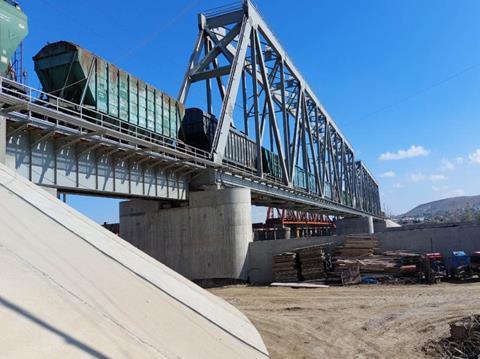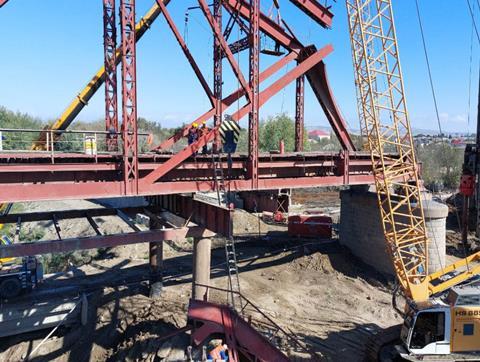
AZERBAIJAN: State railway ADY has commissioned a new bridge over the River Kura on its Zangazur Corridor line between the Caspian Sea port of Alat and Aghbend in the southwest of the country.
Located just outside Alat, the 271 m long bridge is formed of two 111 m long central spans flanked by two outer spans of 19 m. It is 5·7 m wide and carries a single electrified 1 520 mm gauge track.

The bridge has been erected to replace a viaduct dating from 1925 as part of an ongoing upgrading project along the Zangazur Corridor. The old structure suffered from a severe loading restriction, but the new bridge has been built to international standards to accommodate bulk freight.
The new bridge was built as part of a double-tracking project, and ADY had planned to renovate the existing viaduct to carry the second track. However, this plan was subsequently abandoned due to the deterioration of the structure. Instead, the railway now intends to construct a second single-track bridge over the river; this is expected to be completed in March 2023.
The Zangazur Corridor forms a strategically important link from the coast at Bash Alat, south of Baku, to Aghbend, close to the border with Armenia and Iran. Originally constructed during the Soviet era, the railway runs along the northern side of the River Aras, which forms the Iranian border with both Azerbaijan and Armenia; it has been closed west of Horadiz since 1993 as a result of the conflict in Nagorno-Karabakh.
The Azeri government announced in February 2021 that work had started on rebuilding the 110 km between Horadiz and Aghbend, in order to reconnect the capital with the Azeri exclave of Naxçıvan. This route modernisation, which will include construction of nine stations, is due to be completed by the end of 2023.
However, the geopolitical tensions between Azerbaijan and Armenia mean that there is no clear indication of how much more of the corridor beyond Aghbend could viably be reinstated in the medium term.
Reopening of the railway and its onward connections would provide a second north-south corridor linking Iran with Azerbaijan, Russia and Georgia, as well as potentially Armenia.

















